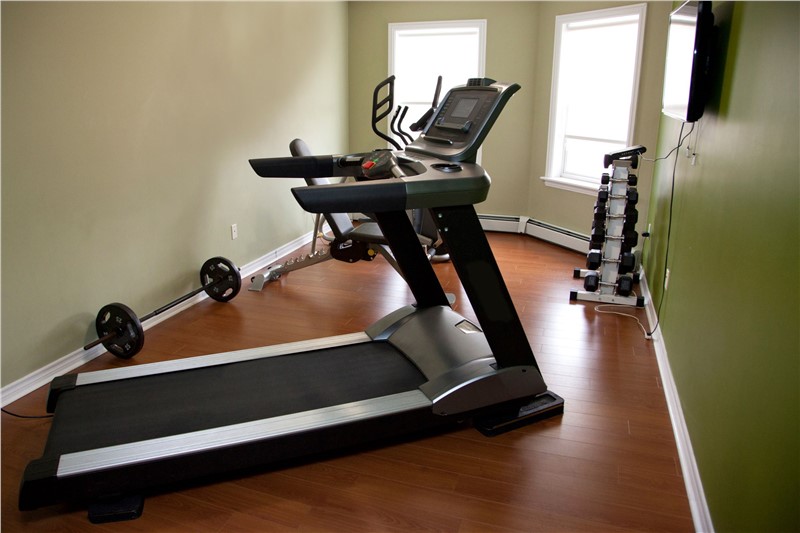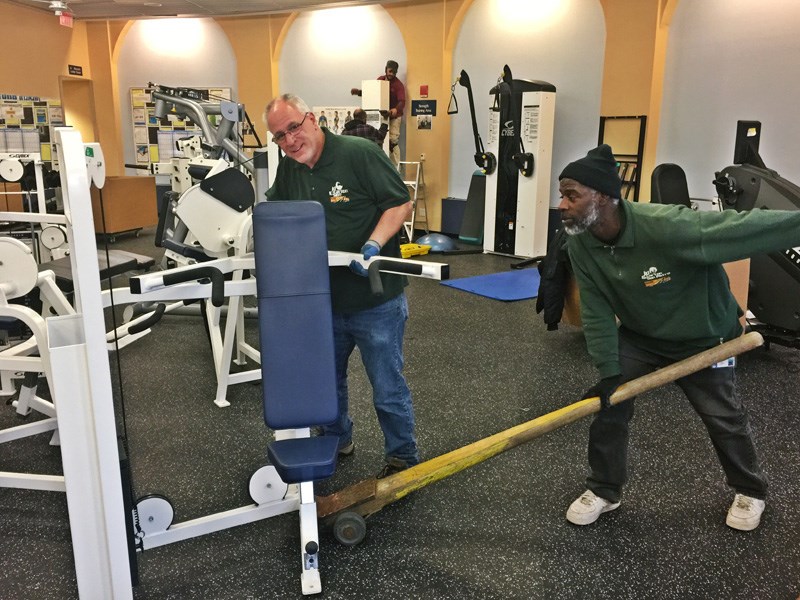How to Move Exercise Equipment, disassemble large items and secure all loose parts. Use proper lifting techniques and assistance.
Moving exercise equipment can be challenging without proper planning. Start by assessing the size and weight of each item. Disassemble larger pieces like treadmills and weight machines to make them easier to transport. Secure all loose parts to prevent damage during the move.
Use appropriate lifting techniques to avoid injury, and recruit help if needed. Renting a moving truck with a ramp can simplify the process. Properly pack and protect smaller items like weights and resistance bands. Label each box clearly to streamline the reassembly process. Taking these steps ensures your equipment arrives safely and ready for use in your new space.

Credit: www.ssrelocation.com
Planning Your Move
Moving exercise equipment can be tricky and stressful. Proper planning ensures a smooth move. Follow these steps to make your move easy and efficient.
Assessing Your Equipment
How to Move Exercise Equipment. Start by assessing your equipment. List all items you need to move. This includes treadmills, weights, and bikes. Note the size and weight of each item. Check if any equipment needs disassembly. Knowing this helps you plan better.
| Equipment | Size | Weight | Disassembly Needed |
|---|---|---|---|
| Treadmill | Large | Heavy | Yes |
| Dumbbells | Small | Varies | No |
| Exercise Bike | Medium | Medium | Yes |
Creating A Moving Checklist
A moving checklist keeps you organized. List all tasks you need to complete. Include packing, labeling, and transportation. Use this list to track your progress.
- Disassemble large equipment
- Wrap and secure fragile parts
- Label all boxes clearly
- Arrange for transportation
- Check for damage before and after the move
Stick to your checklist for a smooth move. Proper planning ensures your equipment arrives safely.

Credit: m.youtube.com
Gathering Necessary Supplies
Before moving exercise equipment, gather all necessary supplies. Proper materials ensure safe transport and prevent damage.
Packing Materials
Using the right packing materials keeps your equipment safe. Here are some essentials:
- Bubble Wrap: Protects fragile parts.
- Moving Blankets: Shields equipment from scratches.
- Stretch Wrap: Keeps items secure.
- Cardboard Boxes: Stores smaller parts.
Use these materials wisely to avoid damage. Ensure all parts are covered and secured.
Specialized Tools
Certain tools make moving exercise equipment easier. Consider these specialized tools:
- Furniture Dolly: Moves heavy items with ease.
- Wrench Set: Disassembles equipment.
- Allen Wrenches: Tightens loose parts.
- Ratchet Straps: Secures items during transport.
Using the right tools prevents injury and equipment damage. Always double-check tool compatibility with your equipment.
Disassembling Equipment
How to Move Exercise Equipment. Moving exercise equipment can be a daunting task. It’s important to disassemble your equipment correctly. This ensures easy transport and prevents damage. Follow our guide to make this process smooth and safe.
Safety Precautions
Safety should always be your top priority. Before you start, make sure you have the right tools. Wear gloves to protect your hands. Disconnect any power sources from the equipment. Clear the area around the equipment. This prevents trips and falls.
Step-by-step Guide
- Read the manual: Always start by reading the user manual. It provides specific instructions for disassembly.
- Gather tools: You will need screwdrivers, wrenches, and pliers.
- Remove small parts first: Start with the smaller components like pedals or handles.
- Label parts: Use labels or bags to keep track of screws and bolts. This helps during reassembly.
- Take pictures: Use your phone to take pictures of each step. This serves as a reference for reassembly.
- Disassemble larger components: Carefully take apart larger sections like the frame or base.
- Secure loose parts: Use zip ties or tape to secure loose parts. This prevents them from moving during transport.
| Tool | Purpose |
|---|---|
| Screwdriver | Remove screws |
| Wrench | Loosen bolts |
| Pliers | Grip and twist |
| Labels | Mark parts |
| Zip ties | Secure loose parts |
| Gloves | Protect hands |
By following these steps, you can safely disassemble your exercise equipment. Take your time and stay organized. This will make reassembly much easier.

Credit: www.jdcarton.com
Packing And Protecting Gear
Moving exercise equipment can be challenging. Proper packing and protection are essential. This ensures that your gear arrives safely at your new location. Here we will cover techniques to wrap your equipment and label its parts.
Wrapping Techniques
Wrapping your equipment correctly is crucial. Use bubble wrap for delicate parts. Large items like treadmills need special care. Follow these steps to wrap your gear:
- Disassemble large items if possible.
- Wrap each piece with bubble wrap.
- Secure the wrap with packing tape.
- Use moving blankets for extra protection.
Foam padding is also useful. It can protect corners and edges. Ensure all parts are well-cushioned.
Labeling Parts
Labeling your equipment parts helps with reassembly. This step saves time and frustration. Use a simple labeling system:
- Use clear labels or masking tape.
- Write the name and number of each part.
- Attach the label to the part securely.
For complex machines, create a list. Note each part’s label and location. This makes setup easier.
Proper packing and labeling protect your equipment. They ensure a smooth move.
Loading And Transporting
Loading and transporting exercise equipment needs care and planning. Heavy machines can cause injuries. Proper techniques and tools keep you safe. Let’s look at how to use moving aids and secure equipment in transit.
Using Moving Aids
Moving aids make lifting easier. They reduce strain on your body. Here are some handy tools:
- Dollies: Great for treadmills and heavy weights. Ensure the load is balanced.
- Furniture Sliders: Perfect for smooth floors. Slide equipment without lifting.
- Hand Trucks: Ideal for weights and smaller machines. Secure the load with straps.
Always use proper lifting techniques. Bend your knees and keep your back straight.
Securing Equipment In Transit
Securing your equipment prevents damage during transport. Follow these steps:
- Wrap machines in moving blankets. This protects surfaces from scratches.
- Use straps to hold equipment in place. Tighten them securely.
- Load heavy items first. Distribute weight evenly.
Check straps regularly during the move. Tighten them as needed.
| Equipment | Best Moving Aid |
|---|---|
| Treadmill | Dolly |
| Dumbbells | Hand Truck |
| Exercise Bike | Furniture Sliders |
Use these tips for a safe and smooth move. Happy lifting!
Unloading And Reassembling
Unloading and reassembling exercise equipment can be tricky. Proper handling ensures your gear stays in top shape. Follow these steps to make the process smooth and stress-free.
Unpacking Tips
After transporting your equipment, start by unpacking it carefully. Use the following tips:
- Inspect boxes for damage before opening them.
- Have tools ready, like scissors or box cutters.
- Lay out all parts on a clean, flat surface.
- Compare parts with the instruction manual.
- Keep small parts in labeled containers.
Reassembly Instructions
Reassembling exercise equipment requires patience and precision. Follow these steps:
- Read the manual thoroughly before starting.
- Identify all parts and hardware.
- Begin with the base or frame.
- Attach larger components first, like seats or handlebars.
- Tighten bolts and screws securely.
- Check moving parts for proper alignment.
- Test the equipment for stability and function.
Below is a table summarizing key tools and their uses:
| Tool | Use |
|---|---|
| Allen wrench | Tighten bolts |
| Screwdriver | Secure screws |
| Wrench | Adjust nuts |
| Lubricant | Ensure smooth movement |
By following these unloading and reassembling tips, your exercise equipment will be ready for use in no time.
Special Considerations
When moving exercise equipment, certain items need extra care. These special considerations ensure safety and prevent damage.
Heavy Machinery
Heavy exercise equipment, like treadmills and ellipticals, require careful handling. Always use proper lifting techniques to avoid injuries.
- Disassemble parts if possible. This makes the equipment lighter and easier to move.
- Use a furniture dolly or hand truck. These tools help in transporting heavy items smoothly.
- Have at least two people for lifting. This ensures better balance and safety.
Secure loose parts with tape or zip ties. This prevents them from moving during transit.
Electronic Components
Electronic parts, like screens and control panels, are delicate. They need extra protection during the move.
- Power off the equipment and unplug all cords.
- Wrap electronic parts in bubble wrap. This provides cushioning and prevents damage.
- Label all cables. This helps in easy reconnection later.
Pack small electronic parts in a box with padding. This keeps them safe from impacts.
Hiring Professional Movers
How to Move Exercise Equipment. Moving exercise equipment can be tricky. Hiring professional movers helps ensure safety and efficiency. Professionals have the right tools and experience. They make the process smooth and hassle-free.
When To Consider Pros
- Heavy Equipment: Machines like treadmills and ellipticals are heavy.
- Stairs: Navigating stairs with equipment can be dangerous.
- Time-Saving: Movers save time and reduce stress.
Choosing The Right Service
Picking the right service is key. Consider the following:
| Factor | Details |
|---|---|
| Experience | Choose movers with experience in handling exercise equipment. |
| Insurance | Ensure they offer insurance for your equipment. |
| Reviews | Check online reviews and testimonials. |
| Cost | Compare prices to get the best deal. |
Choosing the right movers makes your moving process easy and safe. Follow these tips to ensure your equipment is in good hands.
Frequently Asked Questions
What Is The Best Way To Move Exercise Equipment?
Disassemble equipment if possible. Use furniture sliders or dollies for heavy items. Secure loose parts. Lift with your legs, not your back.
How Do You Move A Heavy Elliptical Machine?
To move a heavy elliptical machine, first unplug it. Disassemble parts if possible. Use a furniture dolly. Secure the machine with straps. Recruit help to lift and guide the machine.
How Do You Move Heavy Exercise Equipment Down Stairs?
Use a dolly or hand truck. Secure the equipment with straps. Enlist help from friends. Move slowly and carefully. Take breaks as needed.
How Do You Move Your Home Gym?
Disassemble equipment into smaller parts. Pack weights securely in sturdy boxes. Use bubble wrap for delicate items. Label all boxes clearly. Hire professional movers for heavy machines.
Conclusion
Moving exercise equipment doesn’t have to be stressful. Plan ahead, use the right tools, and enlist help. Secure all parts to avoid damage. Taking these steps ensures a smooth and efficient move. Now, you’re ready to enjoy your fitness journey in your new space.
Happy lifting and stay fit!




Leave a Reply